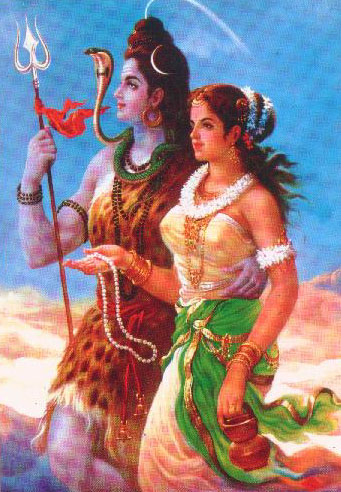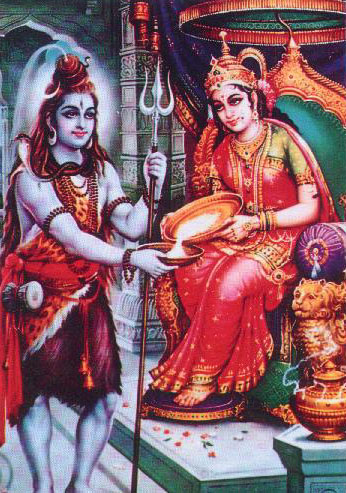Kashmiri Pandits' Version of Sivratri
President, Sant Samagam Research Institute
Naad
All India Kashmiri Samaj
Shiv-Parvati Sivratri (Kashmiris call
it Herath) is an important festival of Hindus. Lord Siva and his spouse
Parvati are worshipped with great devotion everywhere in the country. Even
those Hindus living abroad cannot forget observing and enjoying this king
of festivals. Alongwith worshipping 'Siva' people observe both social and
cultural meets on this festival. They rejoice and exchange greetings with
friends and relatives, no matter how distant and near they are. India being
a vast country, this festival too is observed in various ways according
to place, time and taste. This day is observed on Phalgun Krishna Chaturdashi
corresponding to February-March of each year.
 
Devout people observe 'Sivratri' with great dignity
and devotion and pray for peace and prosperity for humanity as a whole.
They specially keep a fast, put on simple garments, washed or new, according
to the custom of each area. They start preparations for observing this
holy day a few days early. On this day specially, they clean their houses
and surroundings. This time coincides with the advent of spring season.
Naturally people have to change from their winter atmosphere to approaching
spring moods. Therefore, this day instills in them new life, cheer and
job.
'Sivratri' festival is most scrupulously observed
by the Kashmiri Pandits, the ancient and original inhabitants of Kashmir.
They make thorough preparations and collect eatables, fruits and sweets.
The entertainment of the Sivratri festival extends to about three weeks
in Kashmiri Pandit house-holds. Each day or a group of days has a special
name and religious function which include social performances also. Some
of the names are Akodah, Hurya Aatham, Dyara Daham, Vagarye Bah, Heracnia Truvah, Donya Mavas and Tila
Aatham. On each day they have different functions.
During the first week they clean their homes.
They begin the second week with different kinds of worship after collecting
earthen utencils and articles of worship. On 13/14 night they have long
worship of the articles which represent Siva-Sakti and a host of other
deities. It is a happy time, time of joy, devotion and peace. Recitation
from the Vedas and hymns pertaining to the deities and mantra chanting
are made individually and collectively. An example:
Namah Sambhavaya Cha,
Mayo Bhavaya Cha,
Namah Sankaraya Cha,
Mayas Karaya Cha,
Namah Sivaya Cha,
Sivtaraya Cha.
The special thing with Kashmiri Pandits is their
mode and way of celebrating Herath. Two earthen pitchers filled with nuts
soaked in water and flowers represent Siva and Sakti. Then a definite number
of small earthen pots containing a nut and water symbolise the Ghanas and
other deities. These pitchers and pots, collectively are called Vatuk.
There is a set form of worship in each or in a group of Kashmiri Pandits'
homes. After the fast and worship, prasad is taken about mid-night. The
next day also is observed as a day of worship and feast.
Dyra Daham is a day of special social function.
On this day the married daughters go to their in-laws with auspicious cheer
and presents. After the 14th day, prasad (nuts from the pitchers) is distributed
among relatives and friends for about a week. The festival actually ends
on the Phalgun Krishna Ashtami called Tila Aatham. On the evening of this
day people wind up all the material of worship and assemble it by the river
side to immerse the same. In the evening they play local fire works called 'Ja-tun-tun'. Both young and old, are in their playful mood during the
days of the festival. Thus comes to an end the Kashmiri Pandit version
of Herath, the Mahashivratri of India.
| 